Oil Pastel Art Box Inspiration: Claude Monet
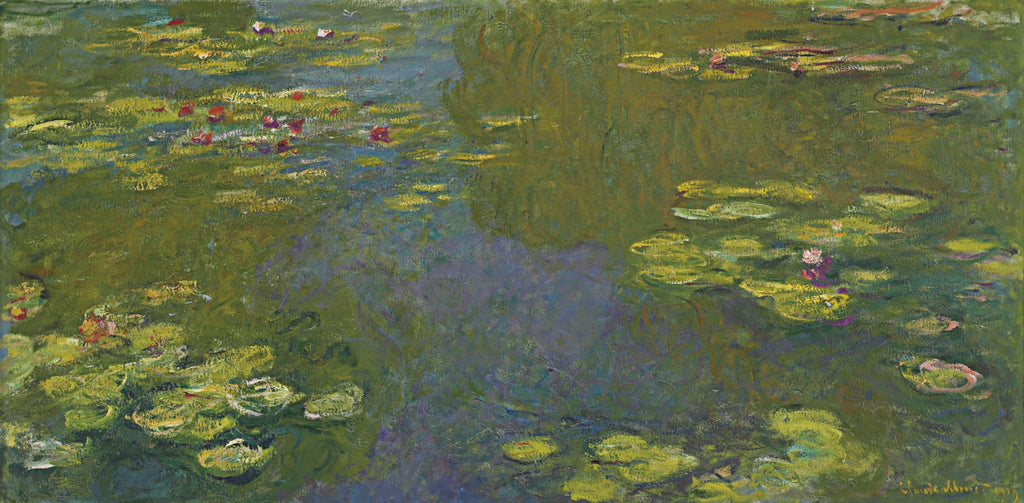

Grainstacks, 1890
Monet’s bright colors and quick brushstrokes—his ability to portray the impression of an image and the effect of light on it and create a sense of fairy-tale power and splendor—is what awe-inspires us today and shocked audiences during his time. While critics made fun of his mere “impression” of an image calling him an Impressionist, this is what in fact captivates us.

Camille on the Beach at Trouville, 1870
So how exactly were Impressionists able to break free from these traditional, realistic ways of making art? They moved from the confines of a classroom outdoors, and started what was called en plein air painting. The impressionists were fascinated by how the eye saw light in nature and how images were affected by the time of day and weather. They also painted regular people and ordinary, everyday events.
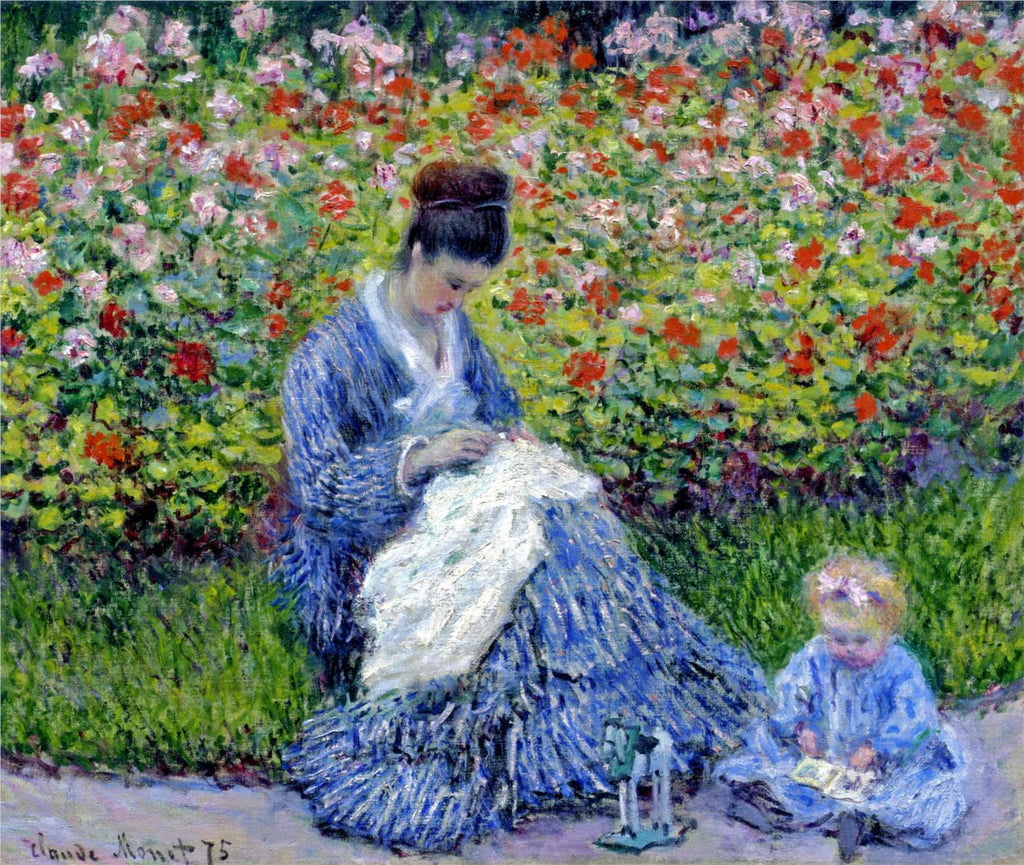
Camille Monet and a Child in the Artist’s Garden in Argenteuil, 1875
To capture the effect of light, Monet loosened his brushstrokes, and carefully selected colors. He also often painted his wife Camille, who unfortunately died from cancer at the young age of 32. Monet was left to raise their two young boys, Jean and Michel. While Monet was greatly affected by Camille’s death, shortly afterwards, he began to paint what are considered some his best works of art. During this time, Monet continued to study the effect of light and color in his series paintings. Painting the same image at different times of day had never been done in this way before—Monet showed the effect of light on color and how it could change our impression of the image.
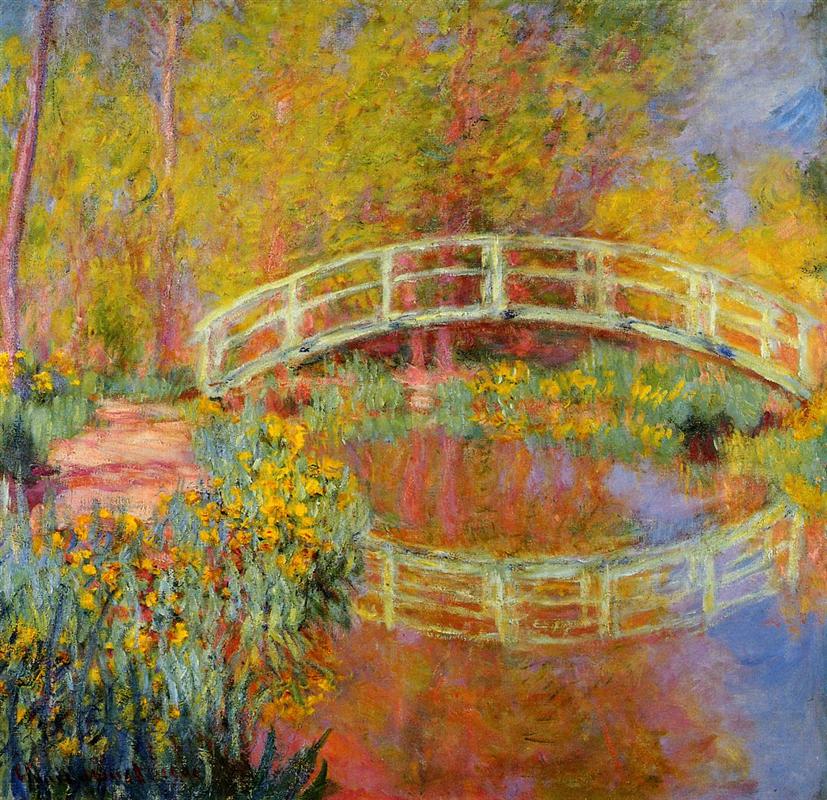
The Japanese Bridge, 1896
He also often painted his gardens in his home at Giverny in France. He was a master architect of his gardens, and even imported water lilies from Egypt and South America, planting them for the scene for one of his most famous works of art. His water lilies now fill a museum gallery, standing over 6 and half feet tall and over 40 feet wide. He even built a Japanese bridge in his garden and painted it 17 times the very year that he built it to reflect the changes of light and weather.
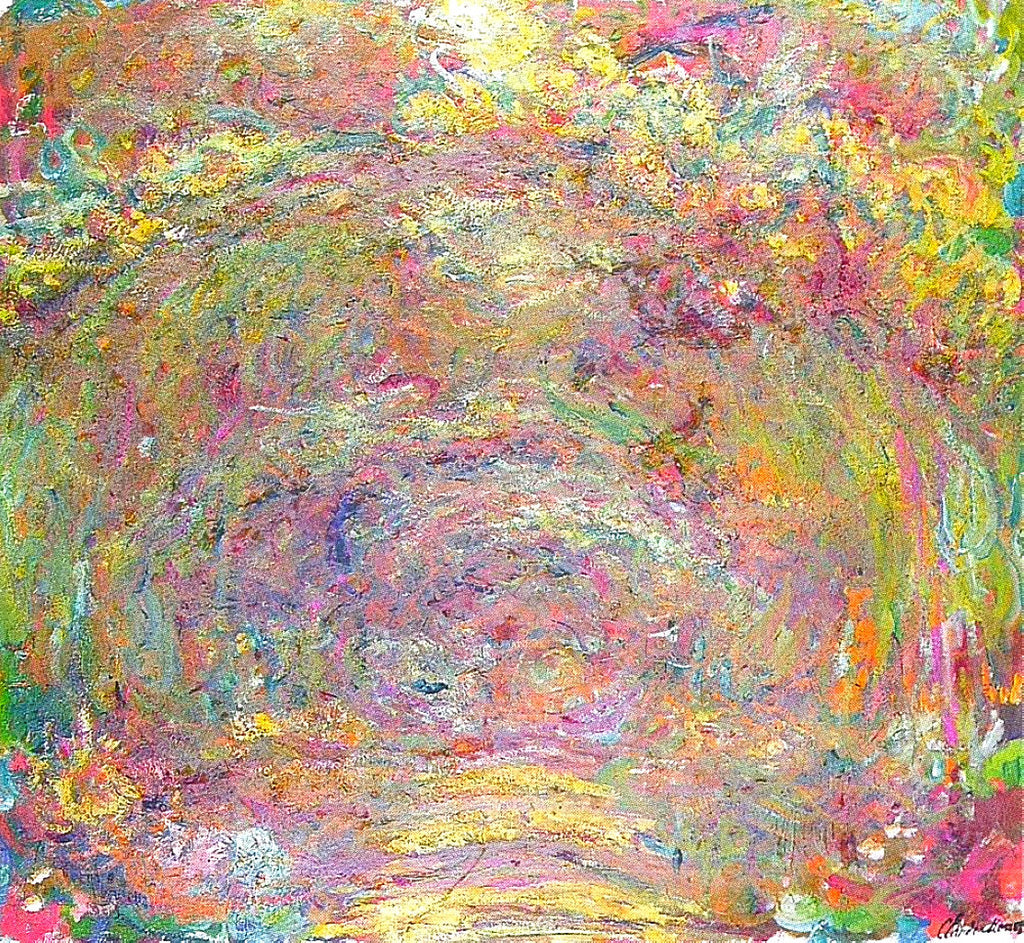
Path Under the Rose Trellises, 1924
Later in his life, Monet’s brushstrokes became even looser and images more abstract, slowly taking on a more expressionist style called post-impressionism. Monet’s images also began to look different around 1912 when he developed cataracts in both eyes that clouded his site and caused him to become nearly blind. Monet finally had surgery to remove the cataracts in 1923, but became increasingly depressed. In fact, Monet suffered from depression throughout his life, he even destroyed some 500 works of his art. Nevertheless, art was a refuge for Monet and he continued to create until the year of his death in 1926—he even said that his only merit in life was having painted in nature, his impressions of fleeting effects. Monet painted some 2,500 works during his life and inspires us to challenge the way we think about art and to make art.
Learn more about Monet and see more of his works in our videos and try making art inspired by Monet!
The Monet Oil Pastel Art Box is the first project for the Monthly Art Box Subscription
Get the Oil Pastel Box

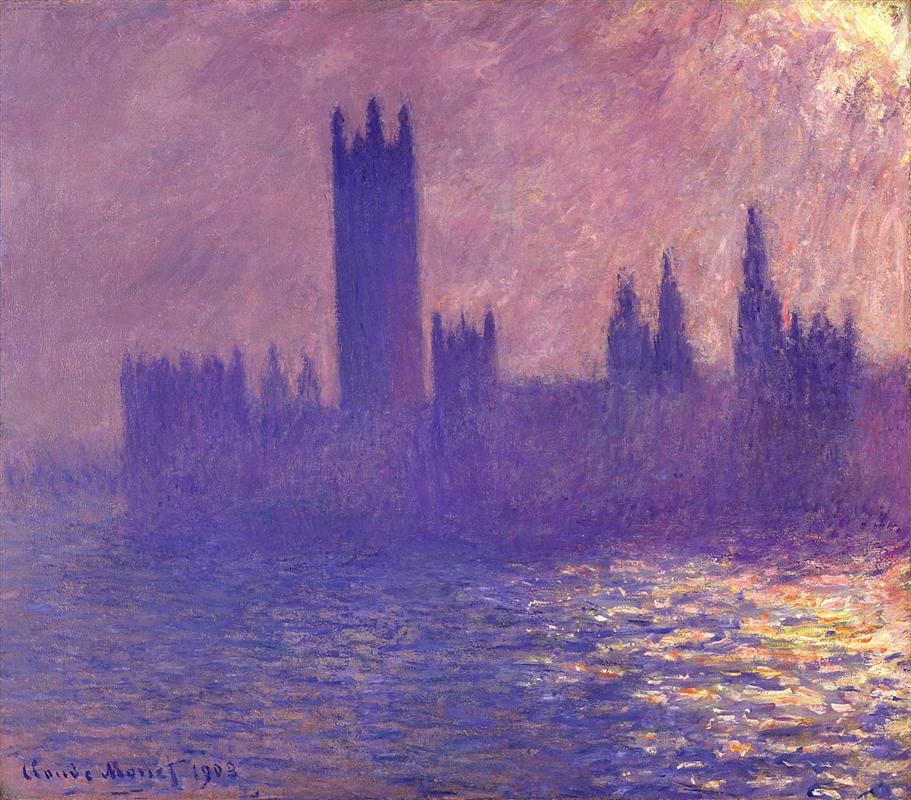
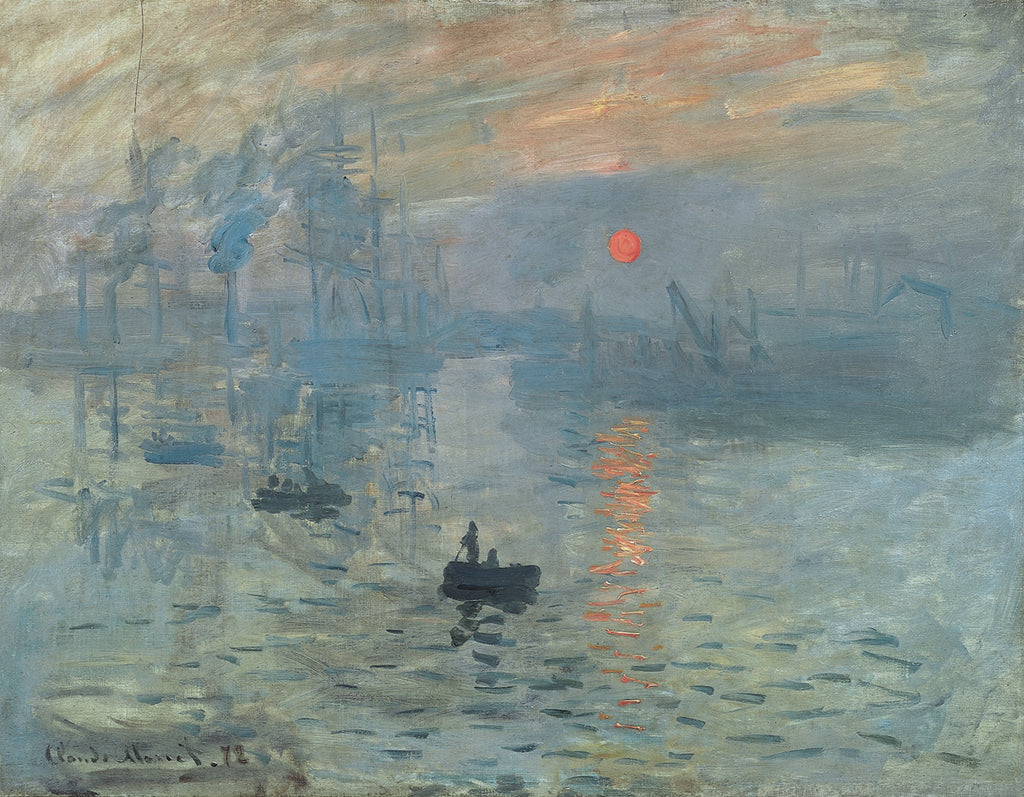
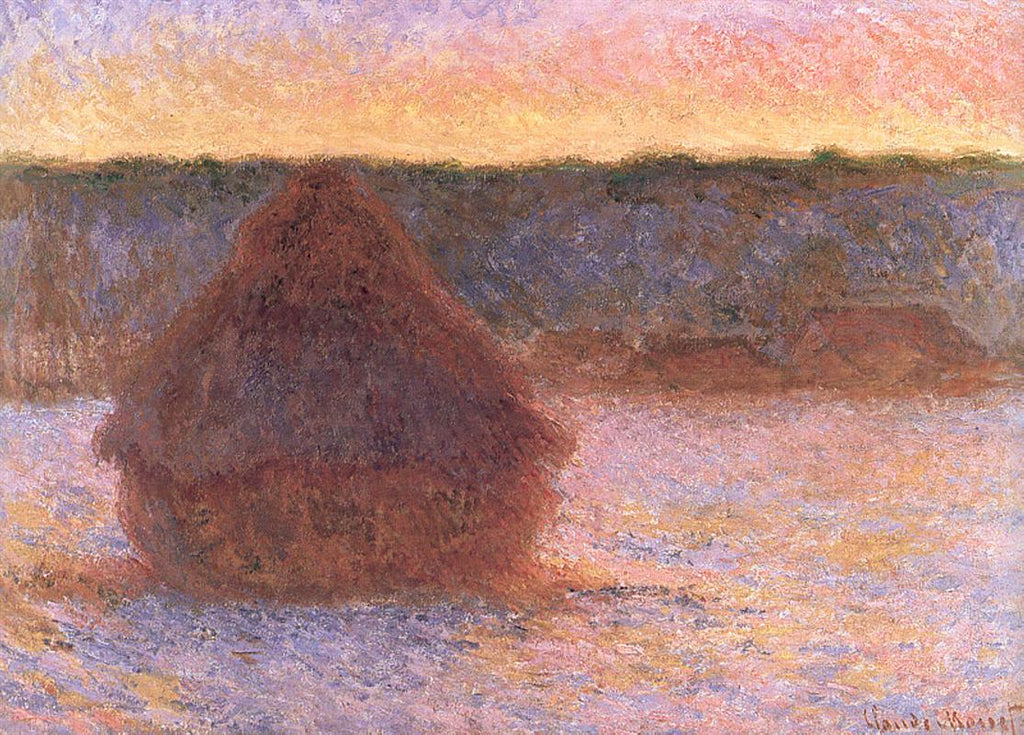
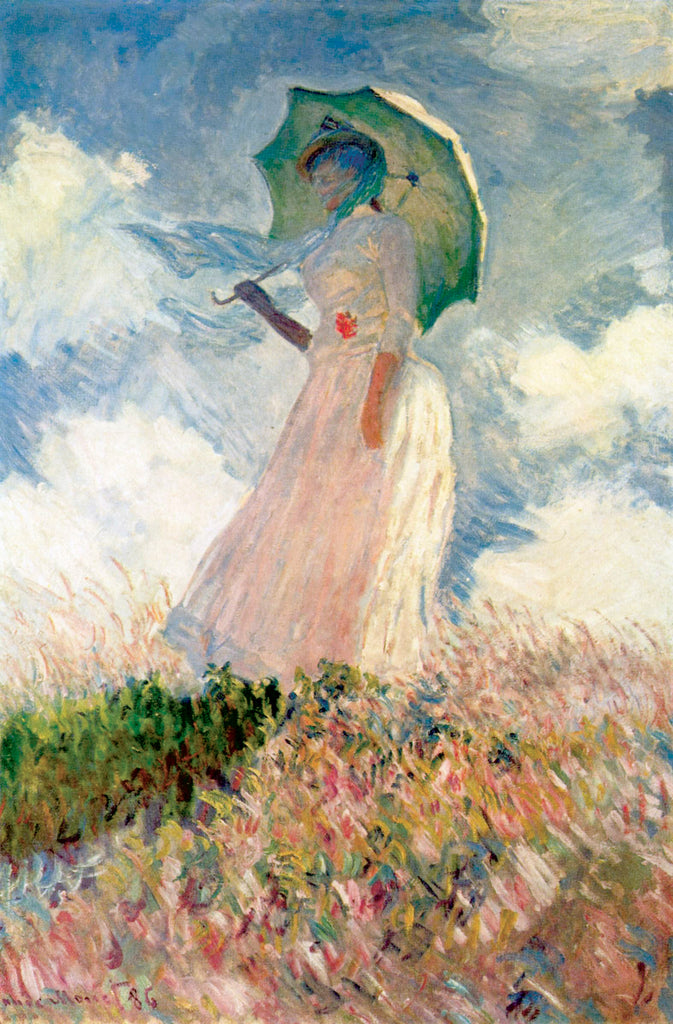
Additional Resources: The Art Story
